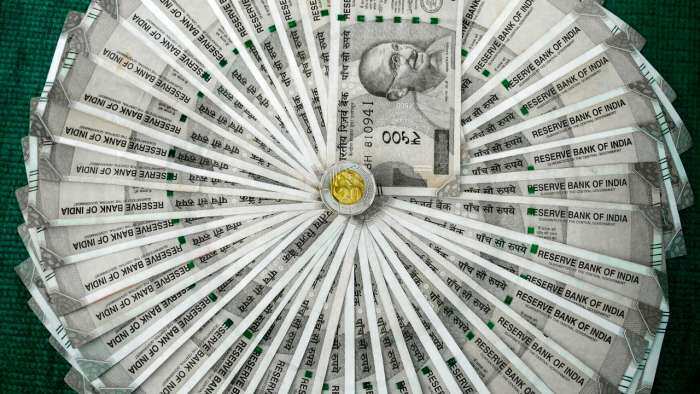Chip shortage eases, offering hope for automobile makers: CRISIL
Chips are vital components with unique electrical properties, serving as the backbone for electronic equipment and devices.
The global chip shortage, which has disrupted the automobile industry in India for a substantial part of fiscal 2021, 2022, and 2023, is finally showing signs of relief. Supply-chain challenges are being addressed, and improved predictive demand forecasts are enabling more stable production schedules.
According to a press release by CRISIL Ratings, the scarcity of semiconductors, essential components in a wide range of electronic devices, had a significant impact on automobile manufacturing, causing production delays and reduced sales in India.
However, the situation is gradually improving, with the supply-demand balance expected to normalize by fiscal 2026, thanks to the operation of new global manufacturing capacities.
Chips are vital components with unique electrical properties, serving as the backbone for electronic equipment and devices.
The computer and communication equipment (C&C) sector consumes approximately 63 per cent of the world's chip production, followed by the automotive sector at 13 per cent, and the consumer and industrial segments at 12 per cent.
Passenger vehicles (PVs) are the most chip-intensive among all vehicle types, utilizing an average of 1,500 chips.
The chip requirement increases as advanced electronic features are incorporated, with electric PVs using nearly twice as many chips as internal combustion engine (ICE) PVs.
Recent developments, including improved chip supply and decreased demand for computers and mobile phones, have led to a reallocation of chip resources, benefiting the automotive sector.
Anuj Sethi, Senior Director at CRISIL Ratings, commented, "The chip shortage faced by Indian passenger vehicle makers is easing, with current chip availability meeting 85 per cent-90 per cent of the total requirement. The production loss due to the chip shortage, which had previously halved to around 300,000 PVs in fiscal 2023, is now estimated to have further declined to under 200,000 PVs by the end of September 2023."
Despite the considerable improvement in chip availability, automakers are still dealing with a backlog of around 700,000 new orders as of the end of September 2023.
The global auto industry's recovery from the COVID-19 pandemic caught manufacturers off guard, as they hadn't placed significant chip orders by the time demand resurged in the latter part of fiscal 2022.
Production lines had already prioritized the C&C segment, responding to surging demand for personal computers, laptops, and mobile phones due to remote work, virtual learning, and telehealth services.
Geographically, the chip industry is unevenly distributed, with Western countries dominating chip design and architecture while semiconductor labs are concentrated in eastern nations like Taiwan and South Korea.
In an effort to balance chip supply, the United States and the European Union have offered incentives of approximately USD 100 billion to encourage local semiconductor fab development.
Many global players are investing around USD 360 billion to establish new facilities, which are expected to become operational by fiscal 2026.
In India, chip demand is set to grow in the medium term, driven by the increasing adoption of electric vehicles and the rising demand for feature-rich ICE vehicles.
Naren Kartic K, Associate Director at CRISIL Ratings, noted, "India currently fulfils its chip demand through imports, but the government is taking proactive steps by allocating around USD 10 billion to bolster the semiconductor ecosystem, offering incentives of up to 50 per cent of project costs to support foundry establishment. Joint ventures with established global players and the commissioning of new facilities are poised to bolster India's semiconductor capabilities."
The easing chip shortage is a promising development for the Indian automobile industry, offering the prospect of more consistent production and faster delivery of vehicles to meet the growing market demand.
Get Latest Business News, Stock Market Updates and Videos; Check your tax outgo through Income Tax Calculator and save money through our Personal Finance coverage. Check Business Breaking News Live on Zee Business Twitter and Facebook. Subscribe on YouTube.
RECOMMENDED STORIES

SIP Calculation at 12% Annualised Return: Rs 10,000 monthly SIP for 20 years, Rs 15,000 for 15 or Rs 20,000 for 10, which do you think works best?

FD Rates for Rs 10 lakh investment: Compare SBI, PNB, HDFC, ICICI, and Post Office 5-year fixed deposit returns

LIC Saral Pension Plan: How much should you invest one time to get Rs 64,000 annual pension for life?

SIP Calculation at 12% Annualised Return: Rs 1,000 monthly SIP for 20 years, Rs 4,000 for 5 years or Rs 10,000 for 2 years, which do you think works best?

UPS vs NPS vs OPS: Last-drawn basic salary Rs 90,000 and pensionable service 27 years? What can be your monthly pension in each scheme?

Monthly Pension Calculations: Is your basic pension Rs 26,000, Rs 38,000, or Rs 47,000? Know what can be your total pension as per latest DR rates
02:30 PM IST











 Maruti Suzuki expects chip shortage to continue for few more quarters
Maruti Suzuki expects chip shortage to continue for few more quarters Amid chip shortage, IIT Hyderabad comes up with special course to support India Semiconductor Mission
Amid chip shortage, IIT Hyderabad comes up with special course to support India Semiconductor Mission Chip shortage hits production hard: Massive backlog of around 6.5 lakh units with carmakers
Chip shortage hits production hard: Massive backlog of around 6.5 lakh units with carmakers Chip Shortage issue: Jaguar Land Rover sales dip 36% to 79,008 units in Q4 of FY22
Chip Shortage issue: Jaguar Land Rover sales dip 36% to 79,008 units in Q4 of FY22